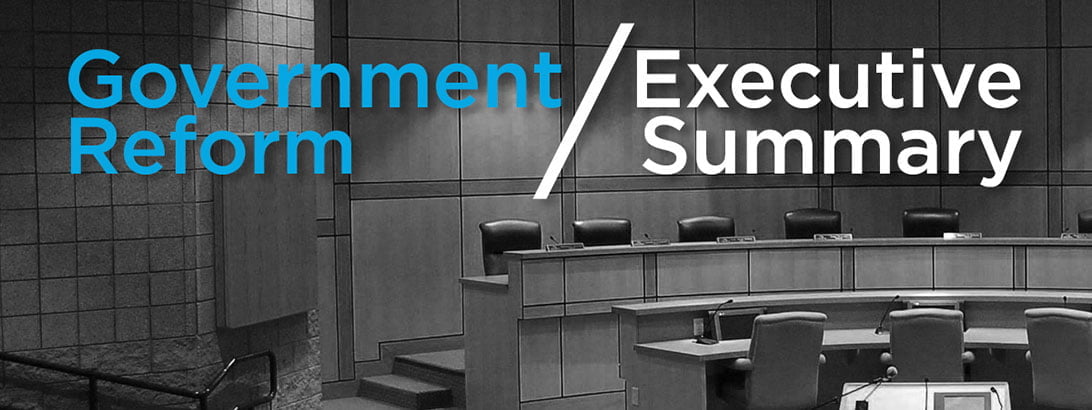The Ontario Government announced a review and potential reform of Niagara’s municipal governance structure. Here is an overview of different governance models. The summaries below include some of the more notable advantages and challenges for each model. For more detail, see the full background paper.
Status Quo
Niagara’s government structure remains unchanged
- No cost – Avoids all financial costs associated with amalgamations.
- Overrepresentation – The ratio of politicians to citizens is very high.
- Duplication – Some services are duplicated and red tape is increased.
- Democratic deficit – Not all votes are equal.
- Collaboration – Cross-municipal projects and coordination requires political will.
Double-Direct
All Regional councillors also serve on city councils
- Low cost – Only 19 political posts would be eliminated, so cost would be minimal.
- Duplication – Both levels of government would still exist.
- Democratic deficit – Not all votes are equal.
- Conflicts of interest – Councillors may face decisions pitting two communities against each other.
Limited local-tier mergers
Some Niagara municipalities are amalgamated
- Moderate cost – Mergers and amalgamations always carry a financial penalty to the taxpayer.
- Efficiency – Merged municipalities may have economies of scale on capital spending.
- Community character – Some may feel that amalgamated municipalities may lose their individual flavour.
Operational mergers
All governments remain in place, but some departments are merged
- Efficiency – Red tape and redundancy would be reduced.
- Moderate cost – Merging government departments will incur expense.
- Overrepresentation & democratic deficit – The political landscape.
- Cooperation – This reform requires political will.
Abolition of Niagara Region
Lower-tier municipalities remain in place while the Region is abolished
- Moderate cost – All Regional services would have to be downloaded or commissions would need to replace them.
- Efficiency – Duplication of services would be eliminated.
Multiple large municipalities
Niagara is remade into a small number of municipal governments
- High cost – A radical remaking of Niagara would entail significant costs to the taxpayer.
- Efficiency – Larger departments would have economies of scale for capital purchases.
- Alignment – If along federal/provincial lines, Niagara would be vertically aligned politically.
One Niagara
Niagara is amalgamated into a single municipality
- Cost – This change would likely result in increased costs to the taxpayer.
- Efficiency – Economies of scale for capital purchases and taking advantage of
economic opportunities. - Government size – Politician-to-citizen ratios could be greatly reduced.
Redistricting
Niagara’s boundaries are redrawn
- Community character – Municipalities could be merged with similar neighbours.
- Cost – Some costs of amalgamation may be avoided if amalgamations are of similar-sized communities.
These potential outcomes are explored in more detail in our full background paper, which you can access here.
Download our Executive Summary and Full Government Reform Paper below:
Executive Summary – Reform (PDF) Governance Reform Paper – (PDF)



